The Hopkins Rose Nudibranch–That Bright Pink Sea Slug
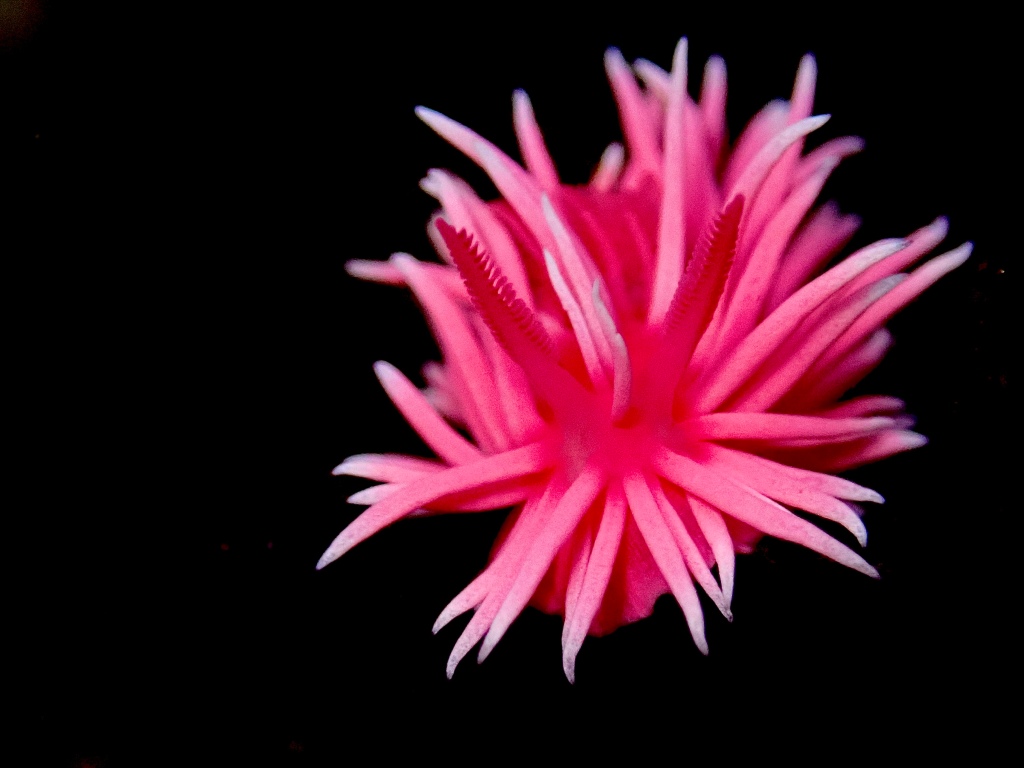
If there’s one nudibranch that a beginner tide pooler in SoCal might notice, it’s the Hopkins rose nudibranch (Ceratodoris rosacea). A shot of bright pink among the many shades of green, blue, and brown, this moderately sized nudibranch is more likely to catch your attention than any other species.
Hopkins rose are one of my favorite slugs to photograph because they were my first introduction to nudibranchs. I spied one while at the tide pools when I had no idea what kind of nudibranch it was. I can’t say I’m proud of those iPhone pictures I took 7 years ago, but I’m glad I noticed this nudibranch by it’s bright colors as it led me into the world of these fascinating creatures.
Quick Facts
- One of the most common nudibranchs in the Southern California tide pools.
- Derives its pink coloration from the rosy bryozoan it feeds on.
- Dorid nudibranch despite physical similarities to aeolids.
- Has the ability to surface crawl for faster locomotion.
- A recent taxonomy update changed the genus of this species from Okenia rosacea to Ceratodoris rosacea
Appearance
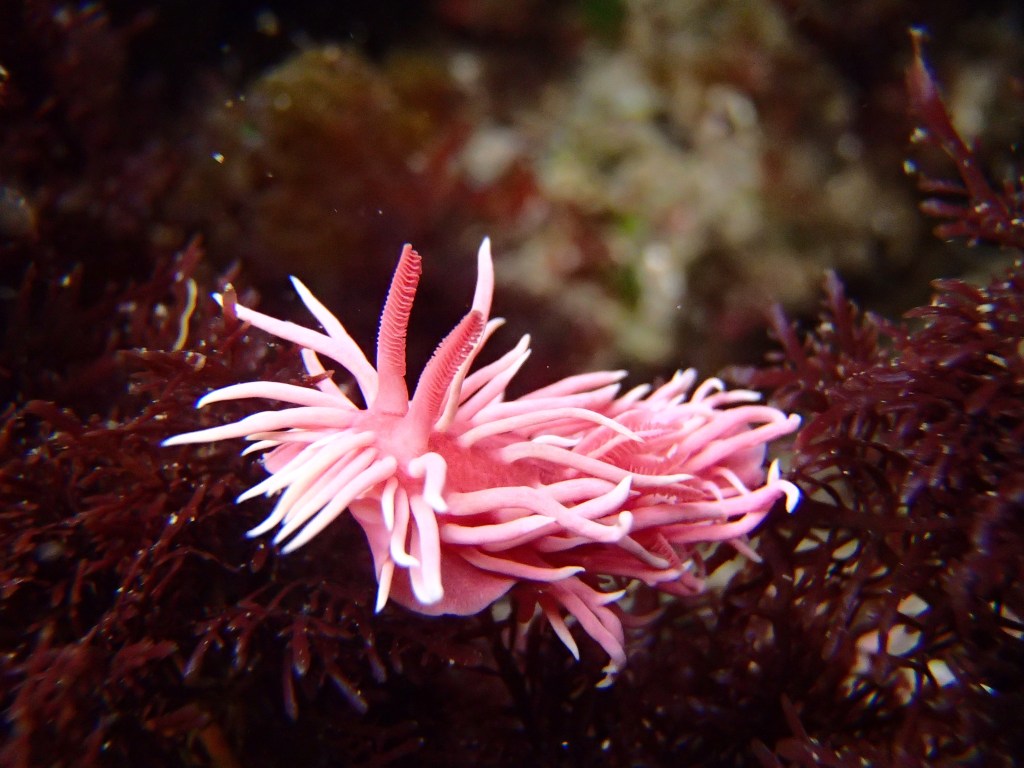
The Hopkins Rose Nudibranch is characterized by it’s pink coloration that can range from pale pink to neon. The back of the slug is covered in papilae, small tentacle like appendages that also exhibit a pink color, but are often paler towards the tips, sometimes fading entirely to white.
Like many nudibranchs, the Hopkins rose has two rhinophores at its head that are sensory organs more akin to a nose than eyes or ears. The rhinophores are feathered on this species, something science refers to as perfoliate rhinophores, which you can see in the image above. They are typically a darker pink than the rest of the body and papillae. This slug lacks oral tentacles.
As a dorid nudibranch, the Hopkins rose has an external feathery-looking gill structure at the anterior of its body that is used to extract oxygen from the water. These also typically exhibit a darker shade of pink than the rest of the papillae. The slug crawls rather slowly along the bottom of the tide pools using a large foot, but it can also “surface crawl,” a much faster mode of locomotion that is exhibited in many nudibranchs.
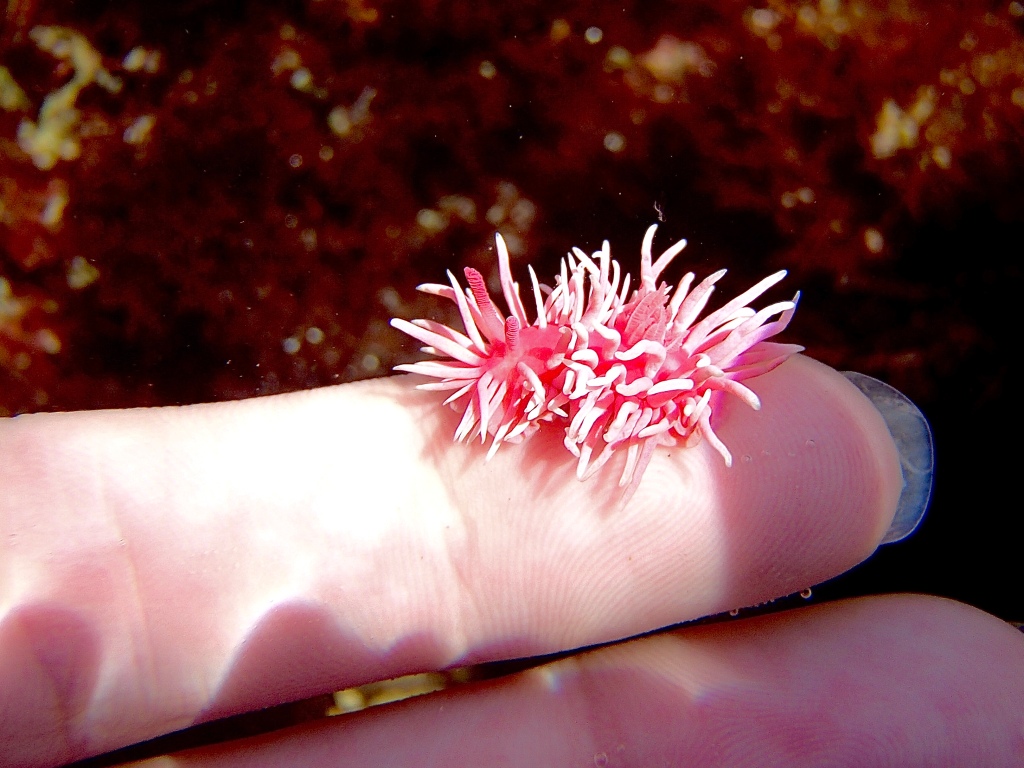
If you’re thinking that this slug looks a lot like piglet, you would be right. These slugs are on the larger side for tide pool nudibranch, typically about an inch long when full grown. But still this is tiny compared to other animals in the tide pools.
Diet
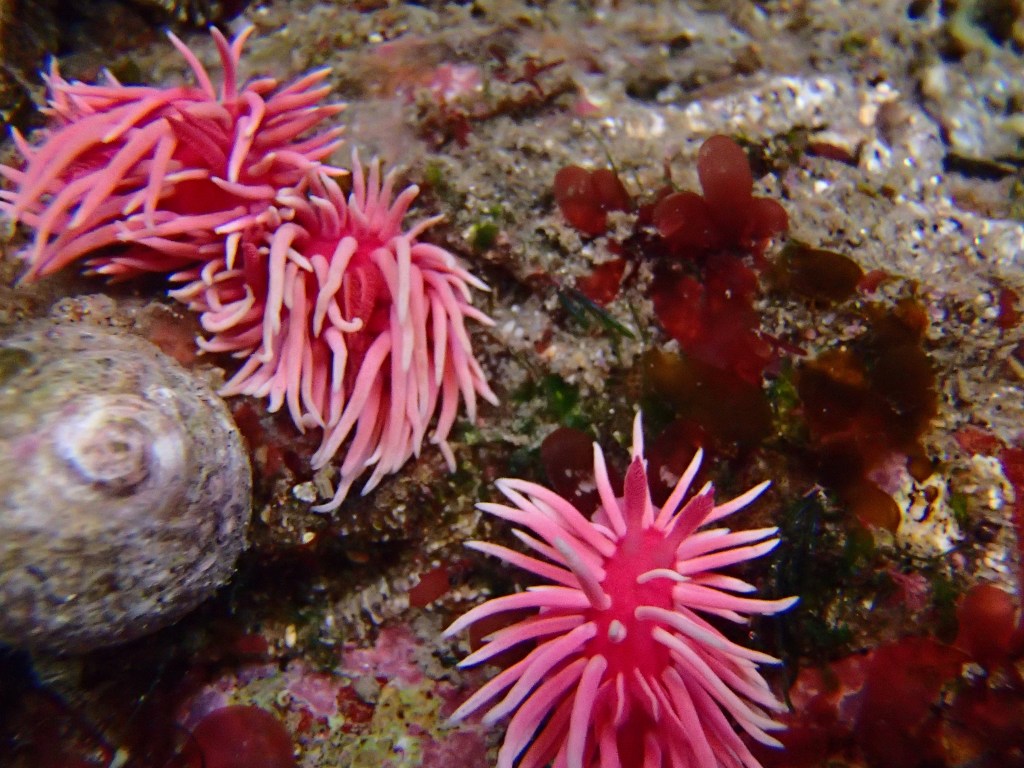
Like many other sea slugs, the Hopkins rose nudibranch has a very specific diet, feeding exclusively on the encrusting bryozoan Integripelta bilabiata, a filter feeding animal similar to a tiny coral. This bryozoan is often called rosy bryozoan because of its color. The Hopkins rose most likely derives its coloration from the pigment in their food source. This is very similar to flamingos that get their pink coloration from their diet of shrimp.
Like many nudibranchs, the color of each individual Hopkins rose depends on diet and health. If a nudibranch hasn’t had much to eat, it may appear less pink or less vibrantly pink.
Habitat and Range
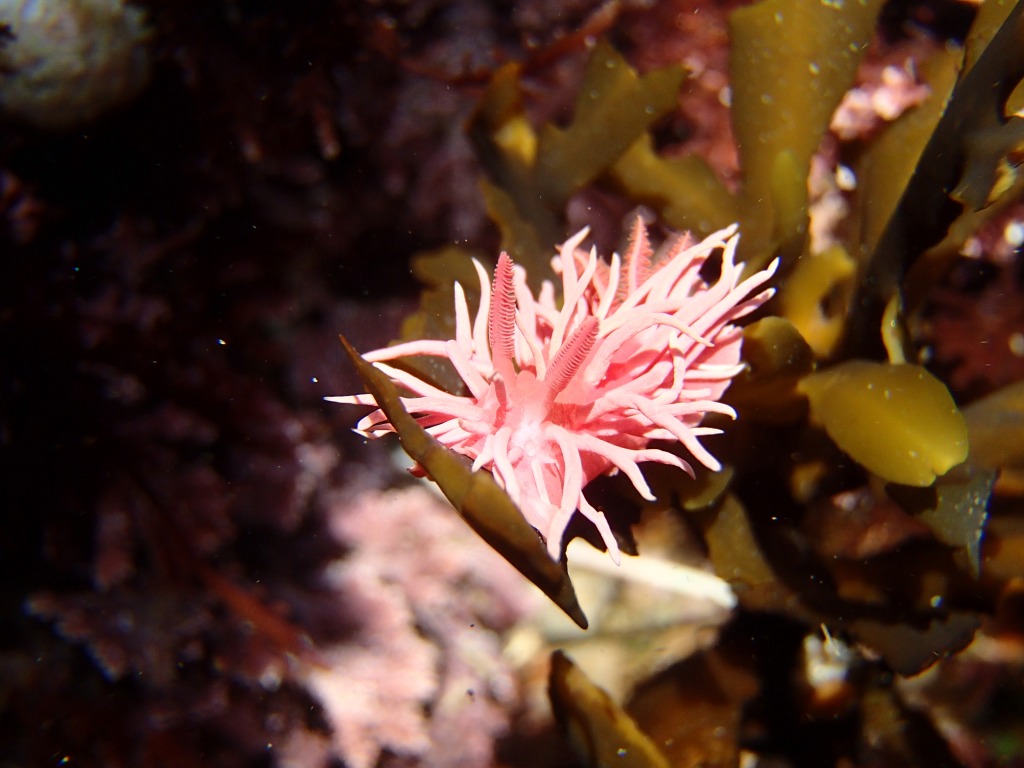
The Hopkins rose nudibranch can be found all along the California coast, ranging from Oregon to Baja. They inhabit the intertidal zones as well as in deeper waters among local kelp forests. They prefer warmer waters compared to some of our other local nudibranchs and are only seasonally abundant in central California near San Jose and Monterey.
My own personal observations indicate that these slugs prefer specific pools and areas that they may live their entire benthic lives in. I can almost always find Hopkins rose if their favorite pools are exposed by the tide. They also seem to prefer algae and sea grass more than other bryozoan-eating slugs.
If you’re looking specifically for this slug, the Corona Del Mar tide pools are a great place to start, as they are very abundant here.
Behavior
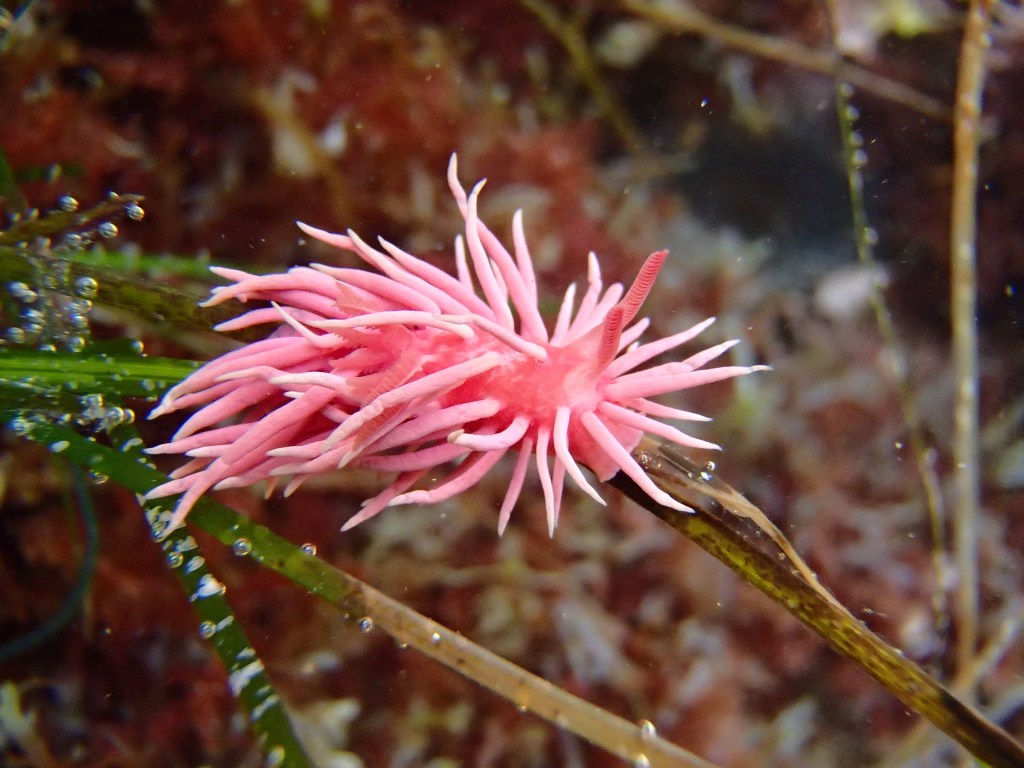
The Hopkins rose nudibranch shares many behavioral characteristics with other nudibranchs and sea slugs. Perhaps one of the most interesting behaviors is the theft of toxins in their food source. Encrusting rosy bryozoan possess a toxic sting, similar to anemones but on a smaller scale. When the nudibranch feeds on bryozoan, it collects the stinging cells and stores them in its own papillae for protection against predators. This behavior is documented in slugs that feed on a variety of organisms; some slugs even steal chloroplasts from the algae they feed on and are then able to perform photosynthesis!
Hopkins rose nudibranchs are benthic animals, meaning they spend their lives on the bottom substrate instead of swimming in the water column. However, Hopkins rose have been observed “surface crawling,” a behavior that allows for faster movement than crawling along the rocks. A nudibranch will use the surface tension of the water to float upside down with their long foot on the surface. This way, they can be moved by the current and even exert some control over their own movement by flexing their bodies back and forth. If you see a nudibranch doing this, don’t “rescue” it. It probably has somewhere in mind it wants to go.
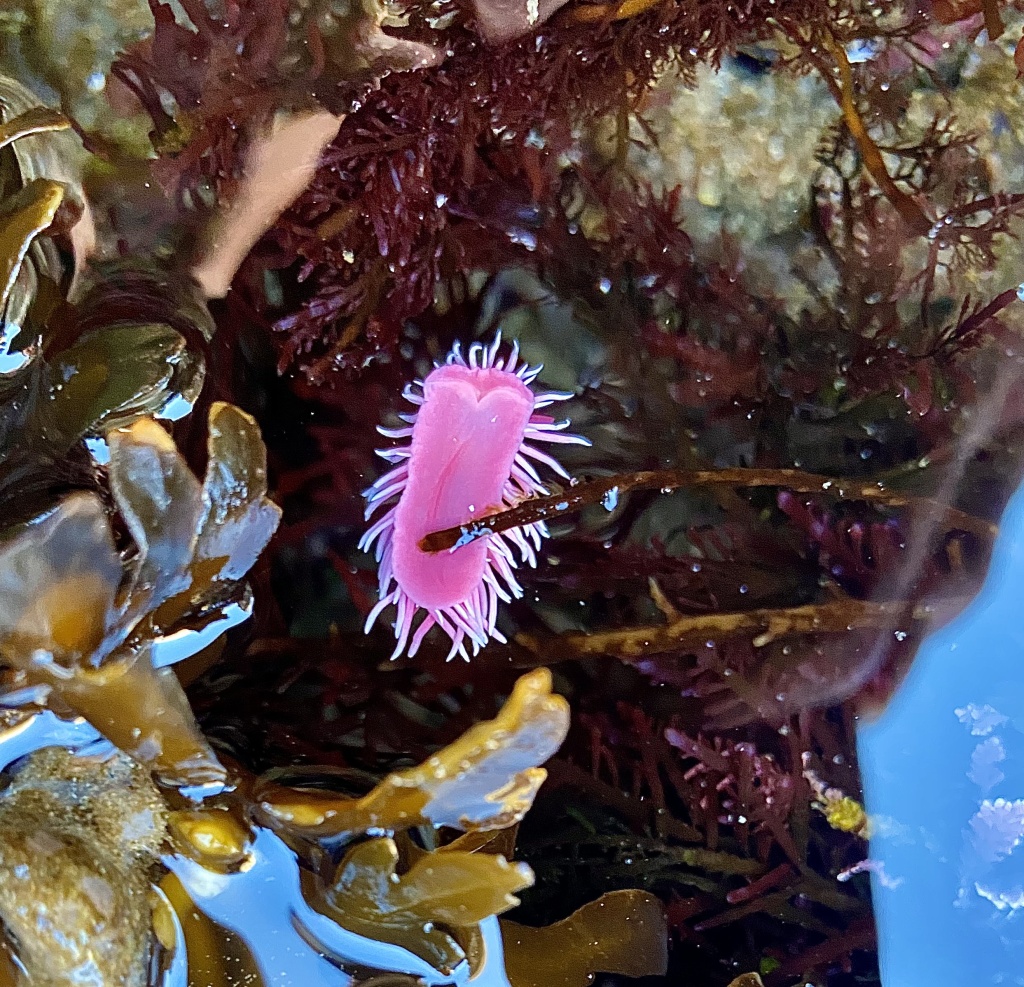
Hopkins rose nudibranchs are typically solitary animals, although they are occasionally seen together feeding or mating. Like all true nudibranchs, Hopkins rose are simultaneous hermaphrodites, meaning every individual possesses both male and female reproduction organs. Any mature slug can mate with any other mature slug of its species, although they cannot mate with themselves.
Hopkins rose can also live outside the water for a limited amount of time. They are often stranded when the tide recedes after feeding. It’s usually best to leave slugs out of the water if that is where you found them. They may be waiting for the tide to return to continue feeding or mating. They do, however, lose their elegant appearance out of the water and resemble pink blobs.
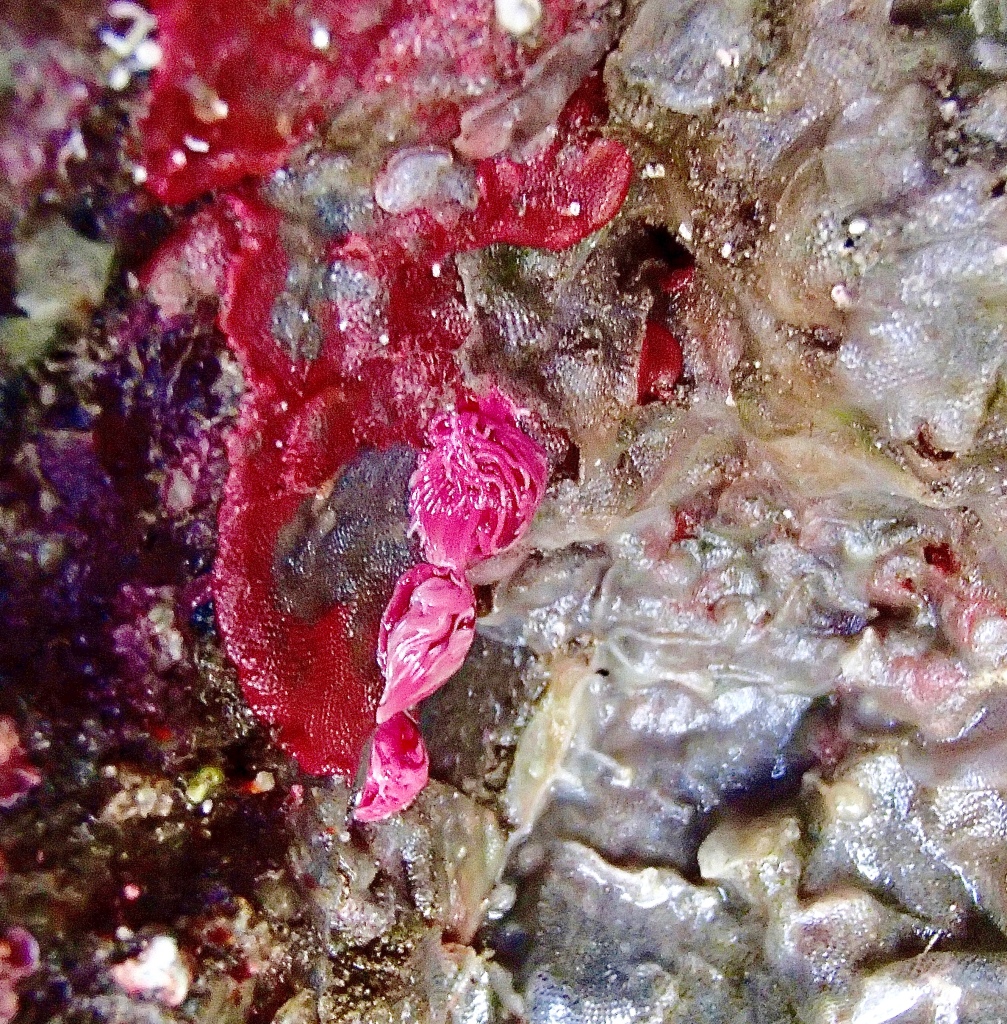
Interesting Facts
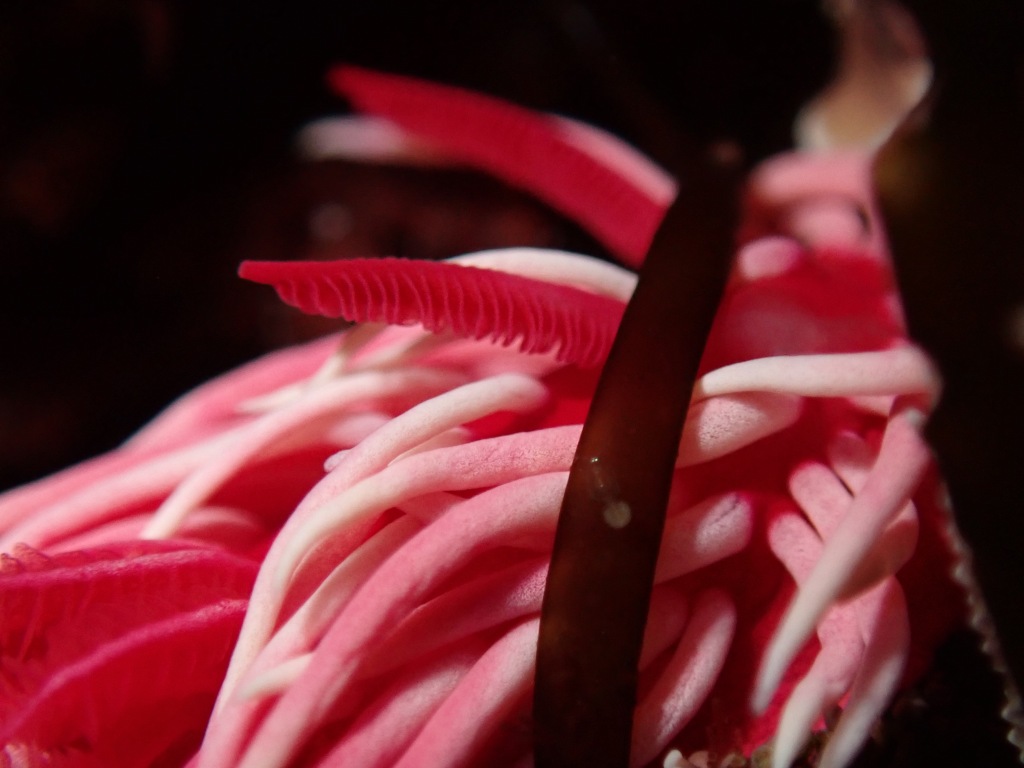
- The Hopkins rose nudibranch was originally described by Frank Mace McFarland in 1905, who named the slug after his friend and fellow biologist, Timothy Hopkins, a patron of the Hopkins Marine Station in Pacific Grove, California.
- The Hopkins rose nudibranch belongs to the suborder Doridina, making them dorid nudibranchs. This has been a point of confusion for some as their excessive papillae make them resemble aeolid nudibranchs. The presence of their feathery, external gills is an indication of their family as well as the lack of oral tentacles (with many aeolids possess).

Categories
tags
Subscribe to the blog
Sign up to receive weekly emails with tide pooling information and guides so you never miss a post!

Leave a comment